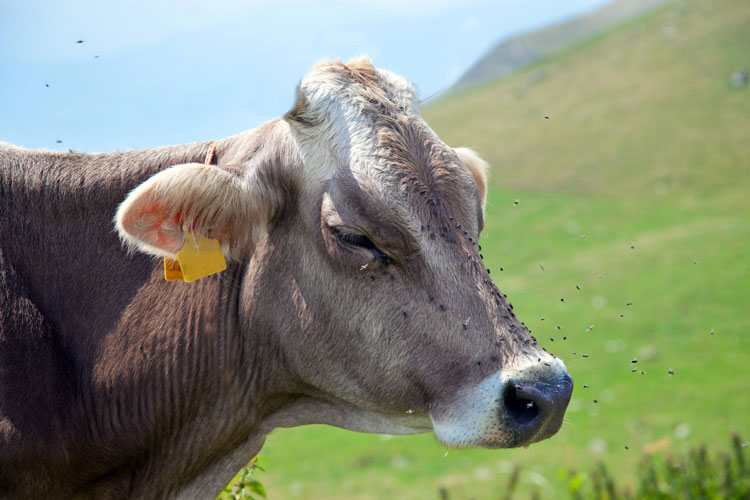
The farm raises replacement heifers from around 400 pounds to confirmed pregnant. The first barn heifers go to is a mono slope barn with good airflow and four to five pens. Heifers come in groups of eight to ten, working their way down the building until they move outside to a bigger lot with older animals. Armstrong said the herd is well-managed, the feed is good, the bunk is taken care of, there is plentiful bedding, and the heifers have great manure scores.
The pinkeye breaks about two weeks after the move out of the mono slope barn and is affecting younger and older heifers. The largest factor Armstrong can pick out is the social stress associated with the move outside. The farm uses an autogenous pinkeye vaccine and has reduced the number cases from four to five a day to three to five a week.
What is causing the pinkeye? Armstrong shared that, to his knowledge, Moraxella bovoculi and Mycoplasma bovis can’t cause pinkeye by themselves; there needs to be an insult injury before they take hold. This means there could be spots in the pen animals can rub on that may harbor pathogens, be difficult to clean, and can lead to the transfer of pinkeye.
When dealing with a case like this, Armstrong said the first thing he will do is jump in a pen and walk the perimeter. That’s because, when new animals enter a pen, the first thing they do is walk the edge of the pen to find what’s there and establish their social dynamic. He looks for any loose wire or tin, nuts, or wood that the animals can scratch on or rub their face when they have eye irritation.
In this situation, Armstrong found a corner that had a little loose tin and chewed wood. There was also a bolt sticking out and a fence post with loose metal. That corner of the barn is under a roof and doesn’t get much sun.
The first solution for this farm to fix the corner was to stick a gate across it. That addressed the most likely area that was spreading the disease. The next solution was to add a prebiotic, probiotic, or postbiotic to the feed to help balance the microbiome during stress periods. On this farm, they started adding it to the ration two to three weeks before the move into this heifer barn and continued it a couple weeks after the move.
“The goal is to mitigate it and reduce it to a level where the producer can take a portion of stress off his plate to free up time to do something else productive,” said Armstrong.








